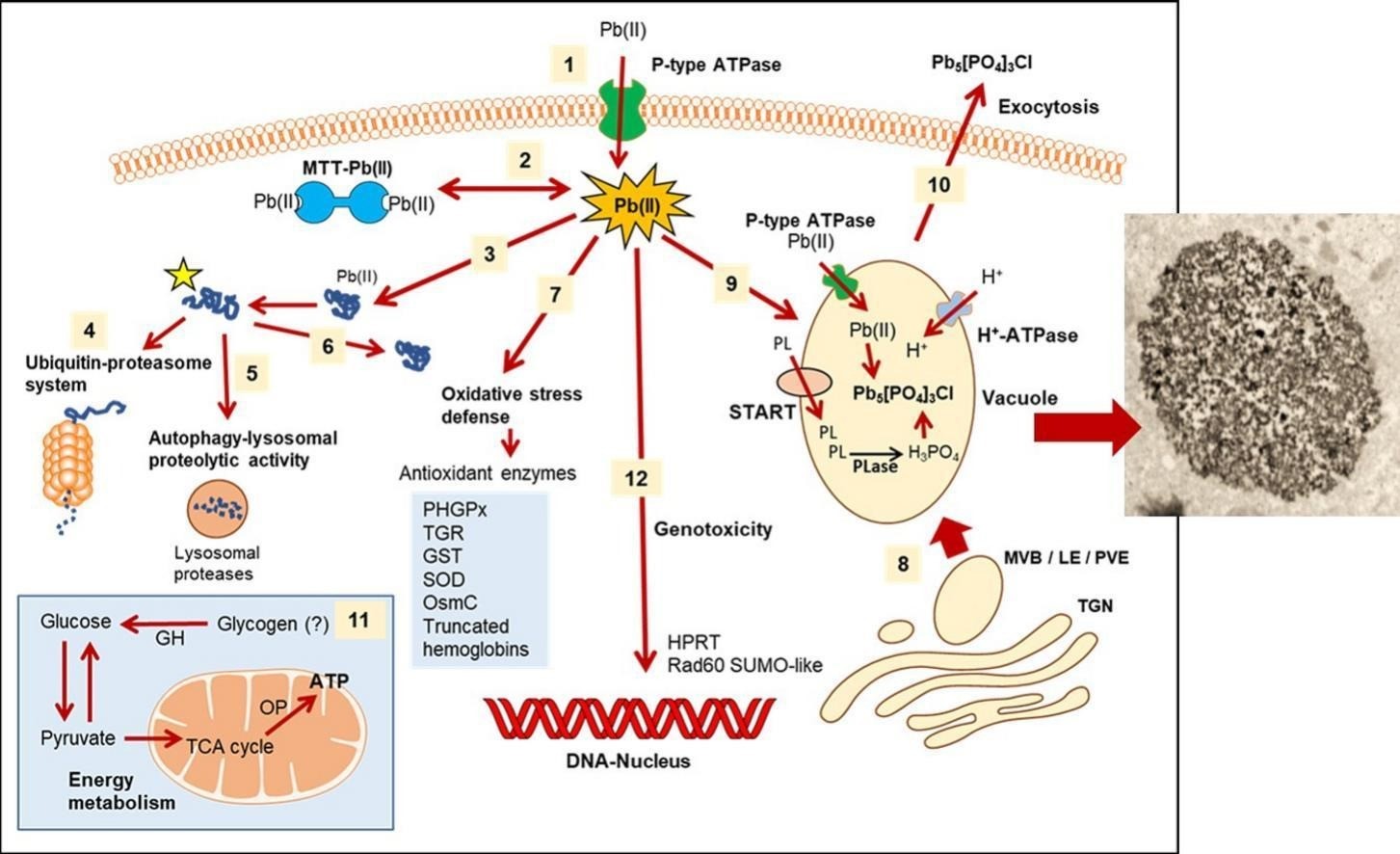de Francisco P, Amaro F, Martín-González A, Serrano A, Gutiérrez JC
Quantitative proteomic analyses of a Pb-adapted Tetrahymena thermophila strain reveal the cellular strategy to Pb(II) stress including lead biomineralization to chloropyromorphite.
Sci Total Environ 2023 May 26:164252
DOI: 10.1016/j.scitotenv.2023.164252
RESUMEN
A strain of the protozoan ciliate Tetrahymena thermophila adapted to increasing Pb(II) concentrations over two years has shown that one of the resistance mechanisms to this extreme metal stress is the lead biomineralization to chloropyromorphite, one of the most stable minerals in the earth s crust. Several techniques such as microanalysis coupled to transmission and scanning electron microscopy (X-Ray Energy Disperse Spectroscopy), fluorescence microscopy and X-ray power diffraction analysis have revealed the presence of chloropyromorphite as crystalline aggregates of nano-globular structure, together with the presence of other secondary lead minerals. This is the first time that the existence of this type of biomineralization in a ciliate protozoan is described. The Pb(II) bioremediation capacity of this strain has shown that it can remove >90 % of the toxic soluble lead from the medium. A quantitative proteomic analysis of this strain has revealed the main molecular-physiological elements involved in adaptation to Pb(II) stress: increased activity of proteolytic systems against lead proteotoxicity, occurrence of metallothioneins to immobilize Pb(II) ions, antioxidant enzymes to mitigate oxidative stress, and an intense vesicular trafficking presumably involved in the formation of vacuoles where pyromorphite accumulates and is subsequently excreted, together with an enhanced energy metabolism. As a conclusion, all these results have been compiled into an integrated model that could explain the eukaryotic cellular response to extreme lead stress.
 Tetrahymena thermophila strain reveal the cellular strategy to Pb(II) stress including lead biomineralization to chloropyromorphite." style="max-width:800px;"/>
Tetrahymena thermophila strain reveal the cellular strategy to Pb(II) stress including lead biomineralization to chloropyromorphite." style="max-width:800px;"/>